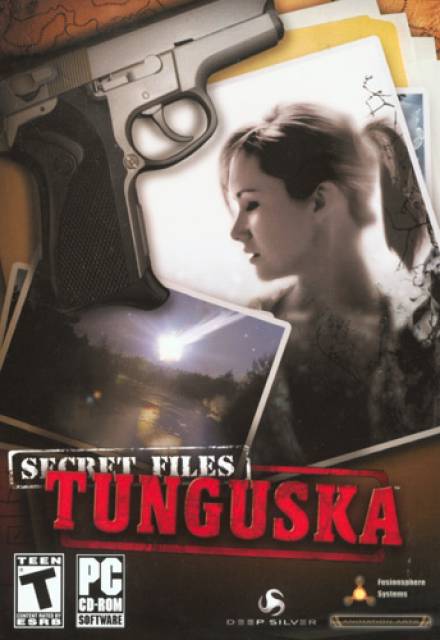Fun while it lasts, but fails to achive true greatness
Geheimakte: Tunguska (engl. Secret Files: Tunguska) is a classical point&click adventure released in 2006 for the PC, with later ports to the Nintendo Wii and Nintendo DS. The story of the game is centered around the explosion of an unknown object over Tunguska in 1908. The player takes control Nina Kalenkov who is investigating the disappearance of her father, who lead an expedition into the Tunguska incident a few decades earlier. Max Gruber, a colleague of her father, also becomes a playable character for a small portion in later parts of the game.
Graphically the game follows into the footsteps of previous modern point&click adventure games, using a combination of pre-rendered backgrounds and 3D animated characters. While the backgrounds themselves look nice, the character animation leaves a lot to be desired, lacking custom animation for actions and instead falling back to generic animations for object use and pick up, so they never really connect properly with the object you are interacting with. It doesn't distract much from the game, as most other adventure games before and after it suffer from the exact same issue, but it shows a lack of polish in the genre, that you don't really see in more mainstream games.
The German voice acting is overall well done, but not really outstanding. The only annoying part is that a few of the character voices sound a little bit to familiar from other games and movies, which can distract a bit from the experience.
Mechanically the game follows modern simplified point&click conventions. A large vocabulary of verbs is missing and instead the player is limited to a 'look at' action on the right mouse button and a context sensitive 'use/pick up/talk' action on the left mouse button. The inventory is presented at a simple list at the bottom of the screen and thus easily available at all times. The mouse pointer changes shape to indicate which items can be used and which items can be combined, this removes the typical "I can't use these things together" voice bits, but it also removes potential for interesting comments. The game avoids pixel hunting by providing a simple function that will highlight objects that can be interacted with. While this function is a welcome addition, one ends up relying on it a little to much for comfort, as objects frequently don't really stand out of the background on their own. Talking in the game follows a topic based approach where the player only selects the rough topic and leaves the individual sentences to the game character.
The puzzle design in the game is a bit convoluted, often requiring rather outrageous things. For example at one point in the game you need a lemon. To obtain it you don't go any direct route, instead you cover up a road sign which in turn will course the lemon transporter to nearly crash and lose a box with lemons in the process. The game is full of puzzles requiring such weird solutions, which especially giving its more realistic tone, doesn't feel quite right. The game however does do an extremely good job at guiding the player into those convoluted solution, so you hardly ever will have trouble finding the solution, as talk with NPCs or the environment will give you plenty of hints.
Overall the game provides good solid adventure fun for the almost 10h that it lasted, but it fails to reach the greater games in its genre. The story presented is good enough to keep the player interested through the game, but it doesn't really leave much of a lasting impression once its over. The ending also felt a little cheap, leaving a few of the finer points of the story unexplored. The jokes that the game tries to pull of come across as a bit wooden and most of the NPCs are little more then cliche comic reliefs. The best part of the game is probably the flow that it manages to keep up throughout the game, the puzzles are always manageable and enjoyable, but never so easy that you feel like playing on auto-pilot.
